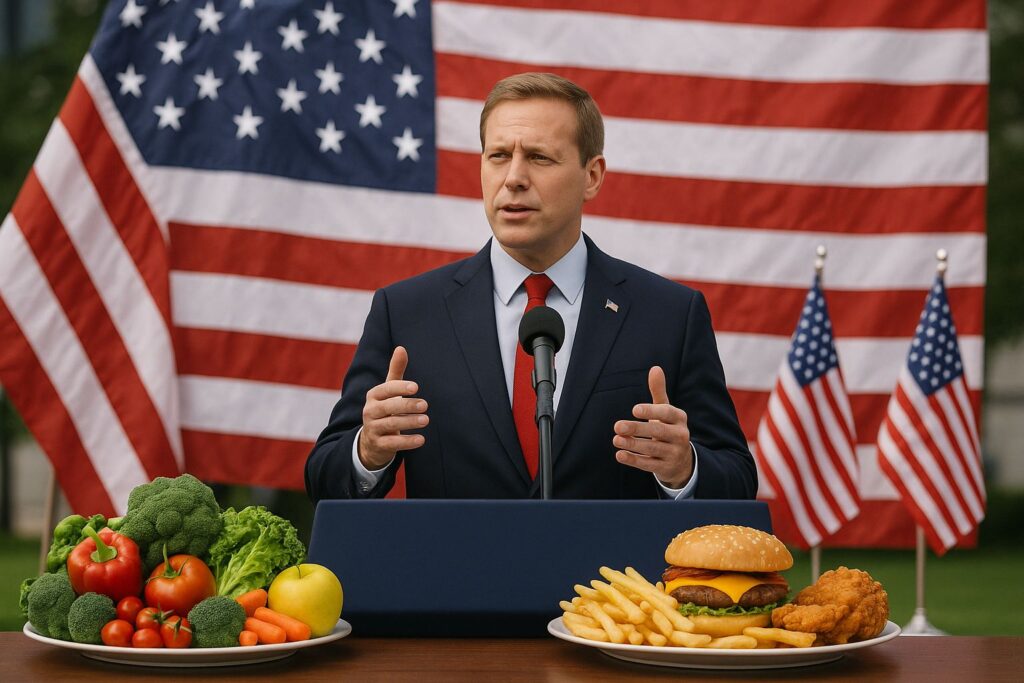
The development behind Make America Healthy Again (MAHA) has quickly moved from a political trademark into a national wellbeing arrangement venture focusing on the U.S. Food System. What started as a guarantee to decrease constant malady presently ranges government commission reports, office run the show changes, state bills, and industry reactions. At its center, MAHA requests cleaner fixings, clearer names, and more grounded responsibility — and those requests are as of now creating genuine changes in how nourishment is directed and marketed.
Food as Public Policy, Not Just personal Choice
MAHA reframes Food choices as open arrangement issues instep of fair individual obligation. The White House has situated the activity as a comprehensive exertion to combat corpulence, diabetes, and other diet-related persistent illnesses by:
- Aligning government agencies
- Steering financing priorities
- Recommending unused regulations
This top-down consideration has quickened recommendations once seen as minimal, counting stricter oversight of ultra-processed foods and limitations on certain food additives.
Transparency in Food Labeling
One of the greatest shifts is the move toward label transparency. Shoppers progressively request reasonable names instep of enigmatic fixing records and deluding showcasing claims. Beneath MAHA, legislators have presented measures to:
- Standardize sustenance labels
- Require clearer fixing naming
- Explore front-of-package warrning for items tall in added substances or ultra-processed content
Surveys appear that Americans need dependable data when buying nourishment, particularly guardians and health-conscious shoppers.
Food Additives Under the Spotlight
The MAHA motivation has focused on artificial added substances and colors. Government offices are arranging to stage out petroleum-based nourishment colors and empower characteristic choices. At the same time:
- State lawmakers have presented bills confining additives
- Some states have passed revelation or boycott laws for foods promoted to children
- Brands confront developing weight to reformulate items to remain competitive nationwide
This makes energy for a national standard on additives.
Industry Response and Lobbying
The nourishment industry faces a crossroads:
- Adapt and reformulate items with cleaner labels
- Or fight new rules through campaigning and open campaigns
Many major companies have swore intentional steps, like staging out colors and highlighting clean-label claims, to get ahead of direction. Be that as it may, industry halls caution that sudden changes might increment costs, disturb supply chains, and constrain customer choice.
Political and Scientific Challenges
MAHA’s quick rise has intensified mindfulness of nourishment dangers, but faultfinders caution against politicizing nourishment science. Specialists contend that:
- Ingredient bans ought to follow straightforward chance assessments
- Rules must adjust public health benefits with financial impact
- Reformulations ought to maintain a strategic distance from substitute ingredients that are similarly problematic
Supporters counter that diminishing presentation to hazardous added substances and guaranteeing transparency will still bring population-wide health gains.
What MAHA Implies Going Forward
- For Customers: Anticipate clearer nourishment names, front-of-package revelations, and more items showcased as clean-label or additive-free.
- For Producers: Companies must adjust through reformulation, supply-chain changes, and showcasing shifts. Early adopters might pick up showcase share, whereas safe brands hazard losing trust.
- For Policymakers: The challenge lies in adjusting science, wellbeing, and financial matters. Harmonizing state-level changes with government guidelines is key to maintaining a strategic distance from a administrative patchwork.
Conclusion
MAHA is reshaping the discussion around nourishment — from taste and comfort to straightforwardness and wellbeing results. Its victory will depend on the science driving changes, the quality of buyer request, and how viably approach and industry decipher guarantees into enduring rules.
What is as of now certain: the American food label has gotten to be a battleground for public health.

